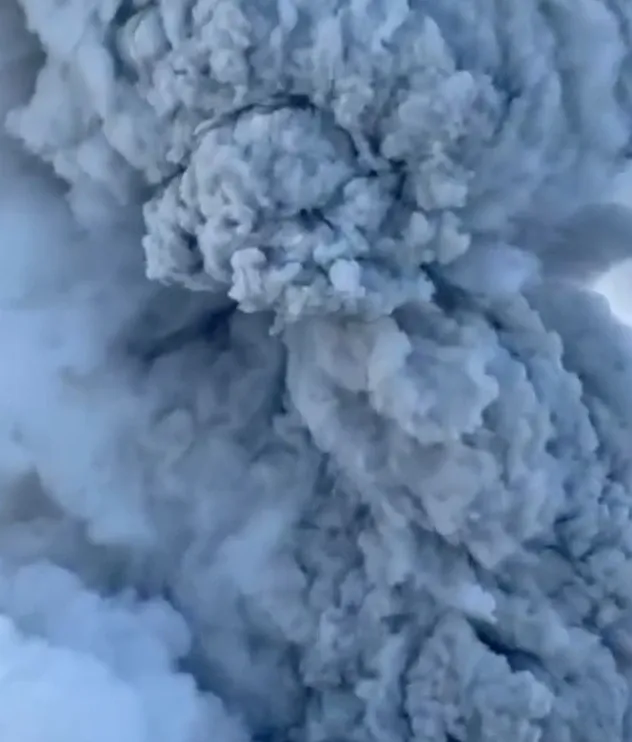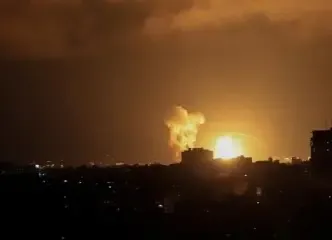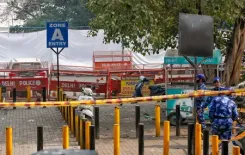What Did the Eruption of Russia's Klyuchevskoy Volcano Leave Behind?

Synopsis
Key Takeaways
- The eruption of Klyuchevskoy Volcano has concluded, creating a new scoria cone.
- Ash plumes reached up to 12 km, affecting local communities.
- The aviation alert code was raised due to increased volcanic activity.
- Concerns over mudflows have been heightened due to a dam collapse.
- Lava is flowing towards the Bogdanovich Glacier, causing accelerated ice melt.
Moscow, Aug 14 (NationPress) The eruption of Klyuchevskoy Volcano, located in Russia's Kamchatka Peninsula, has concluded, resulting in a new scoria cone forming within its crater, according to the Institute of Volcanology and Seismology of the Far Eastern Branch of the Russian Academy of Sciences via its Telegram channel.
Klyuchevskoy, which rises to 4,754 meters above sea level and is approximately 30 km from the village of Klyuchi, is recognized as one of the most active volcanoes in Eurasia. The eruption, which began on July 30, was preceded by a significant earthquake in the area the day before, as reported by Xinhua news agency.
Ash clouds reached heights of up to 12 km, impacting communities throughout the Ust-Kamchatsky municipal district.
On August 7, the aviation alert level for Klyuchevskoy Volcano was elevated from orange to red due to heightened eruptive activities.
The Kamchatka Volcanic Eruption Response Team (KVERT), also part of the Institute of Volcanology and Seismology, stated that a summit explosive-effusive eruption is currently in progress, with satellite observations indicating ash reaching 9.5 km above sea level, and an ash plume drifting approximately 141 km east-southeast from the volcano.
KVERT has cautioned that ash explosions could occur up to 10 km above sea level at any moment, posing potential risks to international flights and low-flying aircraft in the vicinity, as reported by Xinhua news agency.
Standing at around 4,754 meters, Klyuchevskoy is noted as the highest active volcano in Eurasia.
Summit eruptions have intensified following a powerful 8.8 magnitude earthquake off the Kamchatka Peninsula last week.
On August 6, a dam near Klyuchevskoy was breached, heightening concerns of mudflows and transportation issues in the area.
Field investigations conducted from July 30 to August 2 near the Studenaya River confirmed the dam's collapse, which had been built in 2023 to separate the river's channels, allowing water to flow freely through both.
Scientists have linked the damage to increased volcanic activity following the powerful earthquake on July 30.
Lava from Klyuchevskoy is currently flowing towards the Bogdanovich Glacier, accelerating ice melt and leading to significant mud and debris flows.
Experts warn that if these flows continue to escalate, they could pose a direct threat to tourists in the Tolbachinsky Valley.









